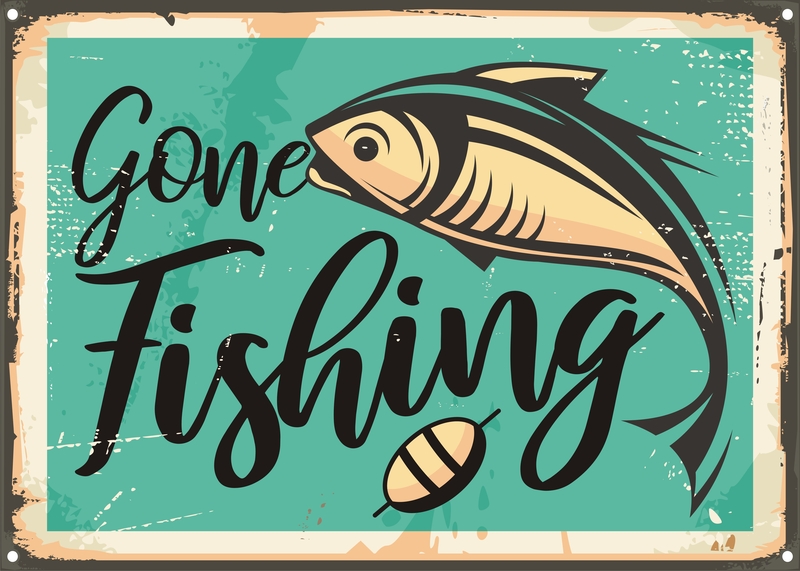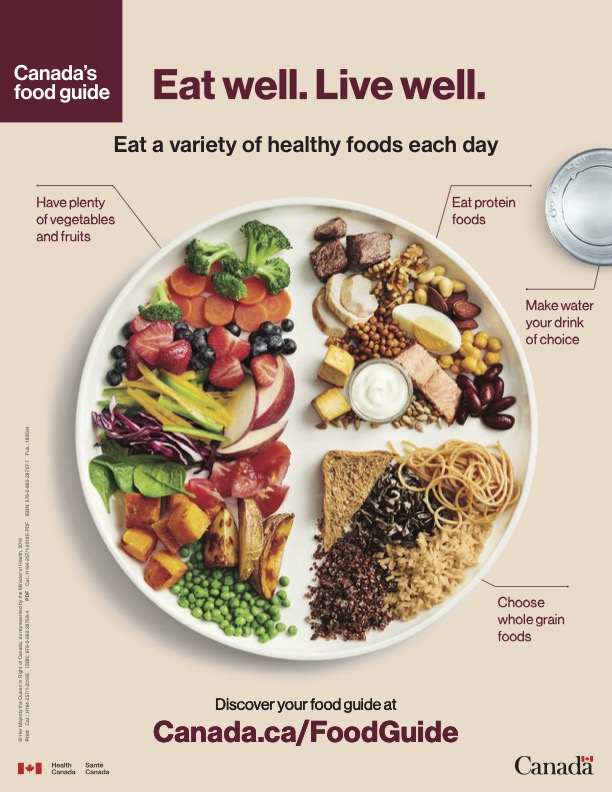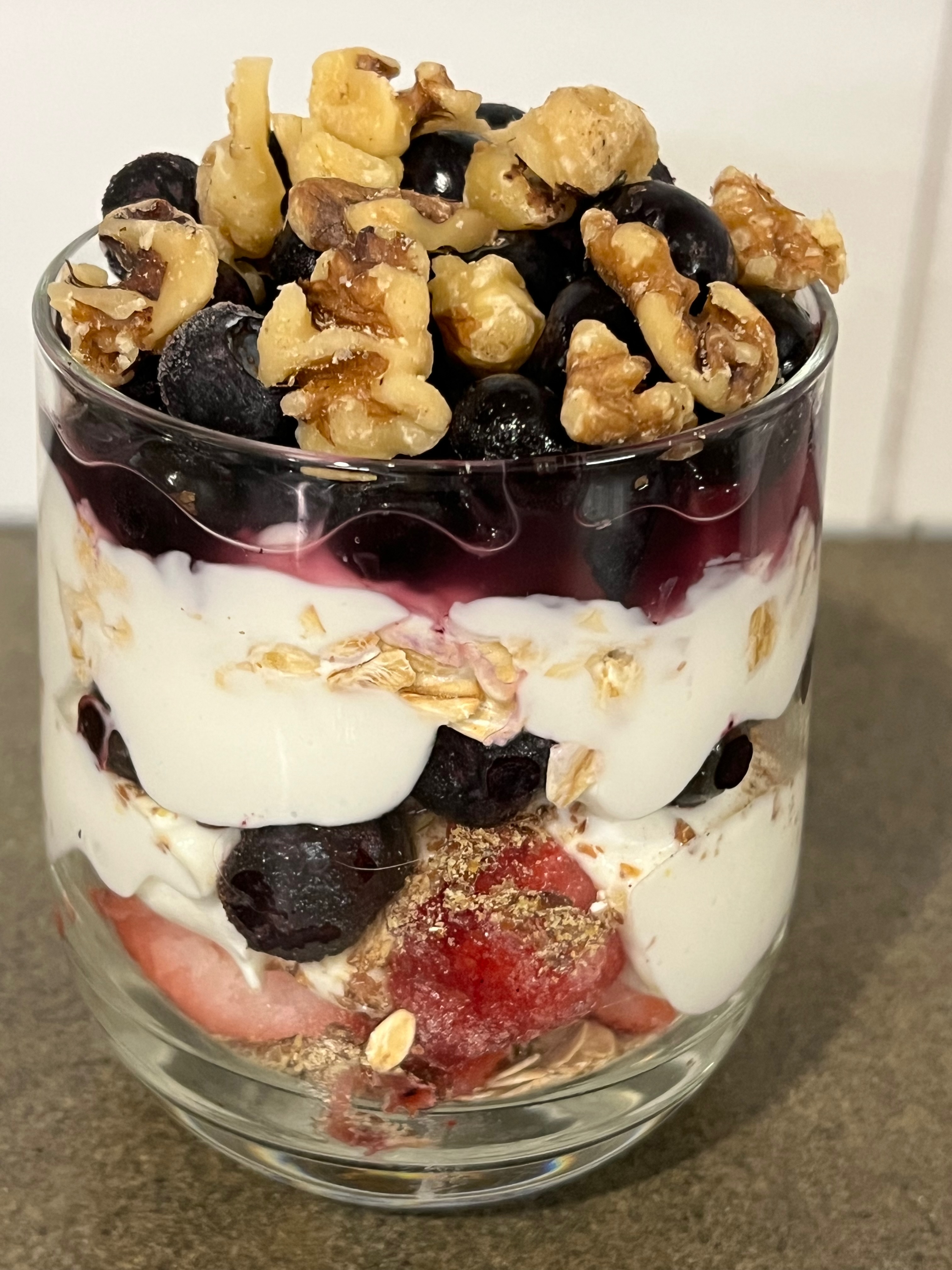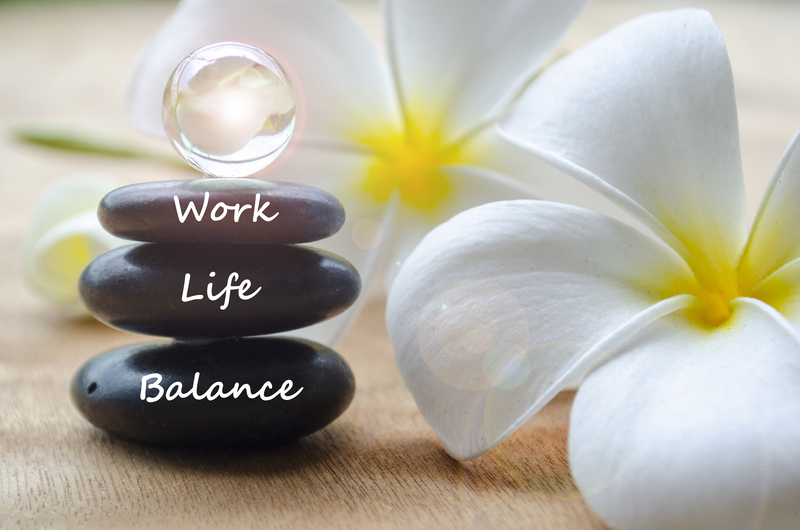- Essential Bookkeeping Habits For Audit Ready Books in Canada
- Work Life Balance
Work Life Balance
The Solopreneur's Handbook to Sustainable Success
By L.Kenway BComm CPB Retired
This is the year you get all your ducks in a row! Start by starting.
Edited October 22, 2025 | Published July 16, 2025
WHAT'S IN THIS ARTICLE
Introduction | Why Work Life Balance Matters | Fundamentals: 1. Setting Boundaries: Home Office Challenge | 2. The Foundation: Sleep | 3. Movement Strategies: For Gym Enthusiasts, For the Movement-Hesitant, For the Time-Crunched, For Nature Lovers | 4. Fuel Your Success | 5. Technology | 6. The Human Connection | Implementation: Self-Care Strategies | Creating Your Work Life Balance Plan | Bottom Line
NEXT IN SERIES >> The Emotional Side Of Money Management
 Build sustainable work-life balance habits. You're not just preserving your health – you're protecting your business's most valuable asset: YOU!
Build sustainable work-life balance habits. You're not just preserving your health – you're protecting your business's most valuable asset: YOU!A recent conversation with a relative who owns a business reminded me of a hard truth: when health issues start appearing in our forties, it's a wake-up call that we're no longer in our forgiving twenties. It's a reality I lived.
This reality, combined with Allan Kehler's Numbers & Sense CPB Canada magazine article "Taking Time For Number One: Remember - Vulnerability is the New Strength", inspired me to address something crucial for Canadian small business owners.
As solopreneurs in Canada, you're likely wearing multiple hats – from CEO to customer service rep, accountant to marketing manager. While building your dream business is exciting, achieving work life balance can feel impossible. However, neglecting your well-being isn't just bad for you personally; it's bad for business.
Recent Stanford research adds urgency to this message. Scientists have discovered that aging doesn't happen gradually as we once believed. Instead, our bodies undergo dramatic molecular shifts around ages 44 and 60 – precisely when many solopreneurs are hitting their business stride. The first wave brings changes in metabolism, cardiovascular health, and how our bodies process stress. The second affects immune function and muscle mass.
For Canadian small business owners already juggling endless responsibilities, these 'aging cliffs' can feel like hitting a wall. But here's the opportunity; understanding these patterns transforms self-care from a luxury into a strategic business investment. By building sustainable work-life balance habits now, you're not just preserving your health – you're protecting your business's most valuable asset: YOU.
Why Work Life Balance Matters for Solopreneurs
When you're running a business, you ARE the business. Your physical health, mental clarity, and emotional resilience directly impact your company's success. Poor work life balance doesn't just affect your mood – it can cloud your judgment, reduce creativity, and oftentimes lead to costly mistakes.
This powerful reminder hits especially hard for solopreneurs. Unlike employees who can take sick days, when you're down, your business often grinds to a halt. Preventive self-care isn't selfish; it's strategic business planning.
When the world feels chaotic, when you're recalculating costs due to new tariffs, when you're wondering how global instability will affect your clients and your profit margin ... that's exactly when you cannot afford to burn out.
The Hidden Costs of Ignoring Work Life Balance
Canadian entrepreneurs face unique challenges – from navigating seasonal business fluctuations to managing GST/HST requirements. Add the isolation of working alone, especially during long winter months, and maintaining work life balance becomes even more challenging. When you're constantly in 'hustle mode', you might experience:
- Decision fatigue leading to poor business choices.
- Decreased productivity despite longer hours.
- Strained relationships with clients and suppliers.
- Physical symptoms like headaches, insomnia, or digestive issues.
- Loss of passion for the business you once loved.
Work Life Balance Fundamentals
Setting Clear Work-Life Boundaries
You can't pour from an empty cup. Take care of yourself first.
Norm Kelly
1. The Home Office Challenge
 Solopreneur taking a time to relax in home office after breathing in fresh air.
Solopreneur taking a time to relax in home office after breathing in fresh air.Working from home makes work life balance particularly challenging. The boundaries between professional and personal life blur dangerously – and this confusion often shows up in mixed business and personal expenses. Let's look at three types of boundaries that help create separation:
Physical Boundaries
Here's my suggestions for creating a physical boundary when you work from home:
- Create a dedicated workspace to mentally separate work and personal life (even if it's just a corner).
- Close the door, clear your desk, or use a room divider at day's end.
- Keep work materials (including financial documents) out of living spaces.
- Have a specific spot for receipts and paperwork to avoid losing them. Better yet, consider scanning receipt on your smart phone as soon you receive one.
Time Boundaries
Running your own business, you want to nurture your 'baby'. I get it. However, it's important to set time boundaries to your work day and let them be known. Here are my suggestions:
- Set official business hours and communicate them to clients and colleagues.
- Schedule specific times for bookkeeping tasks – your brain can't switch between creative work and number-crunching efficiently.
- Use an answering service or auto-responder after hours.
- Turn off work notifications after hours to protect your personal time.
- Resist the 'just one more email' or 'just one more invoice' temptation.
Mental Boundaries
It's important to mentally transition to work mode when working from home. Here are some ideas that might work for you:
- Change clothes when starting/ending work.
- Create transition rituals (make tea, water plants, etc.).
- Keep a 'worry journal' to dump business concerns before bed.
- Learn to say no – don't over schedule yourself or take on too much.
- Separate business and personal financial thinking time.
Work Life Balance Fundamentals
The Foundation: Sleep
Almost everything will work again if you unplug it for a few minutes, including you.
Anne Lamott
1. Prioritizing Sleep as a Business Strategy
 Tired businessman who hustled a little too hard!
Tired businessman who hustled a little too hard!Sleep isn't downtime – it's when your brain consolidates memories, processes information, and prepares for tomorrow's challenges. Yet many entrepreneurs wear sleep deprivation like a badge of honor. This is a costly mistake that destroys work life balance.
Sleep researchers recommend that adults aim for 7-8 hours of quality sleep for optimal cognitive performance. Here's how to protect your sleep as a business asset:
- Set a consistent bedtime, even on weekends.
- Create a relaxing bedtime routine to signal your body it's time to rest (but skip the nightcap – while alcohol may help you fall asleep initially, it disrupts your sleep cycles and reduces the restorative REM sleep your brain needs for problem-solving and creativity).
- Keep your bedroom for sleep only – no work laptops allowed.
- Invest in blackout curtains (especially helpful during Canada's long summer days).
- Turn off work notifications to protect your mental space.
Further Reading on Sleep and Performance:
- Canadian Sleep Society (css-scs.ca) - Evidence-based sleep guidelines for Canadians
- 'Sink Into Sleep' by Dr. Judith Davidson - Queen's University (sinkintosleep.com) - Practical strategies for better sleep
- Centre for Sleep & Human Performance - Calgary (centreforsleep.com) - Resources on optimizing sleep for high performers
- The Canadian Society for Exercise Physiology - CSEP (csepguidelines.ca) - Official sleep guidelines and recommendations for healthy sleep habits endorsed by the Public Health Agency of Canada.
2. Beating the Canadian Winter Blues
If you find your energy and motivation tanking between November and March, you're not alone. Up to 15% of Canadians experience SAD (seasonal affective disorder), and even more feel the 'winter blahs'. This isn't weakness; it's biology responding to our reduced daylight. Here are some simple SAD-busting strategies:
- Light therapy - Use a 10,000 lux lamp for 20-30 minutes each morning while doing your paperwork or bookkeeping. There are even some lamps that work as an alarm clock so you wake to daylight instead of the radio.
- Vitamin D - Get tested and supplement as needed (most Canadians are deficient). Your bones will thank you when you are a senior. Osteoporosis is no joke!
- Morning light - Open the curtains immediately, even on cloudy days. Get outside for natural light as soon as possible after rising.
- Lunch walks - Even 10 minutes of winter daylight helps.
- Schedule joy - Plan something to look forward to each week during dark months.
🦆 Feather This: February paperwork or bookkeeping errors might not be carelessness; they might be SAD. Plan accordingly by front-loading complex tasks to fall months when possible.
Work Life Balance Fundamentals
Movement Strategies for Every Solopreneur
Movement is a medicine for creating change in a person's physical, emotional, and mental states.
Carol Welch
Let's be honest. Not everyone loves exercise. (Gasp!) Some of us thrive on morning gym sessions, while others break into a cold sweat just thinking about working out. But here's the thing ... movement isn't optional when you're running a business. Your physical health directly impacts your mental clarity, decision-making abilities, and ultimately, your bottom line. The good news? There's a movement strategy for every personality and schedule.
JUMP TO >> Gym Enthusiast | Movement Hesitant | Time Crunched | Nature Lover
 Kayaking the Columbia River in the evening was stress relieving.
Kayaking the Columbia River in the evening was stress relieving.1. For The Gym Enthusiasts
If you're already active, fantastic! The key is maintaining consistency when business gets busy.
🦆Duck Tales: The Ripple Effect of Consistency
I learned this lesson early, watching my father consciously begin an exercise regime in his fifties after seeing his high-stress profession take its toll on his peers. He made fitness part of his daily routine, not an afterthought – and that discipline gave him a high quality of life well into his nineties. Even in his eighties, he was at the YMCA gym every morning at 6:30 AM.
His consistency had a ripple effect beyond his own health. One summer, while babysitting for a neighborhood family, they asked me to pass along a message: "Tell your father when he's late, it affects our schedule!" Turns out, they'd built their morning routine around his daily jog – using him as their human alarm clock. When he ran by their window, they knew it was time to get ready. The one day he was late, their whole family was thrown off schedule!
Personally, I love HIIT classes these days. They get me out of the house and away from my desk. I like the structure, synergy, and energy of an in-person fitness class. But everyone's different. For you, it might be:
- Morning workouts before emails can derail your plans.
- Lunch hour fitness sessions. (I used to do aerobic workouts at a nearby gym three times a week in my thirties.)
- Weekend activities with friends. (My retired brother still plays hockey regularly with his buddies.)
- Evening stress-release activities. (Kayaking the Columbia River was my go-to stress reliever in my fifties.)
Put these in your calendar with the same commitment you'd give a client meeting. Your future self will thank you. When you intentionally schedule movement in your day, it sets a calm tone instead of chaos.
2. For the Movement-Hesitant
Not a gym person? No problem. Movement doesn't always require the dreaded spandex or a membership fee.
Walking Meetings: The Royal Treatment
Take inspiration from Queen Elizabeth II, who conducted some meetings while strolling through her grounds with Prime Ministers. This brilliant strategy combines business with movement. Here are some suggestions:
- In-person meetings - Suggest a walk through a local park or around the block.
- Phone conferences - Use wireless earbuds and walk during calls that don't require screen sharing. (I pace around my house during calls – it helps me think better.)
- Client check-ins - Meet at a coffee shop and walk with your beverages.
- Brainstorming sessions - Movement often sparks creativity.
- One-on-ones with colleagues - Build rapport while getting steps.
Walking meetings work best for status updates, creative discussions, and relationship-building conversations – basically any meeting that doesn't require screen sharing. You can try it out to see if it works for you too.
To make a walking meeting work during the long Canadian winters, consider these options:
- Indoor options - Walk in malls, large office buildings, or community centers.
- Dress appropriately - Keep some weather-appropriate gear at your office.
- Have a backup plan - Switch to indoor walking or a seated meeting if needed.
The 'Fake Commute' Strategy
Establish a clear start and end to your workday. This might include shutting down your computer, writing tomorrow's top three priorities, changing clothes, taking five deep breaths to signal the transition ... or taking a 'fake commute'.
If you work from home, you can create boundaries to your work day with movement. Here's my suggestion:
- Morning 'commute' - Walk around the block before starting work.
- Lunch 'commute' - Another walk to mentally to 'go out for lunch'.
- Evening 'commute' - A final walk to 'come home' from work to decompress from the day.
The 'fake commute' creates mental separation and adds steps to your day. It's a very simple way to clear your mind. This is important when you work from home. Use this time for podcasts or audiobooks if that's what you prefer. A 5 to 15-minute walk around your neighbourhood can reset your focus. Hey maybe you start enjoying yourself and go for a 30 minute commute before heading 'home'.
🦆 Duck Tip: I started working from home in 2006. I found getting dressed for work made my work days more productive than the days I stayed in my pj's. As I lived on a lake, my 'fake summer commute' was a quick kayak trip around the island near my place.
Easy Chair Yoga and Stretches
For those that really don't like leaving their desk, chair yoga should help you get movement into your day. Here are some ideas:
- Neck rolls to combat 'tech neck' (set a timer every hour)
- Shoulder blade squeezes while reading emails
- Seated spinal twists during phone calls
- Ankle circles under your desk
- Wrist stretches to prevent carpal tunnel
More >> Chair Yoga Stretches
Micro-Movement Breaks
Chair yoga stretches aren't for you? Then try incorporating micro-movement breaks into your day.
- Take 'recess' like you did in school – set a timer for 5-minute 'play' breaks (no-uh-uh no online games - it doesn't count as movement).
- Do 10 jumping jacks between tasks. I'm not a fan jumping jacks at my age, I prefer the low impact version.
- Walk to the kitchen for water (bonus: hydration!).
- Stand (or walk around the office) during phone calls.
- Skip the elevator. Take the stairs when possible.
- Park your car farther away in the parking lot when grocery shopping.
- Every time an ad comes on when you are watching TV in the evenings, do a quick household chore. The idea is to increase your movement instead of hibernating.
3. For the Time-Crunched
Think you don't have time? These options take less time than scrolling through social media.
HIIT for Time-Crunched Entrepreneurs
Even in retirement, I'm a fan of HIIT routines ... or its other variations. These are quick intense workouts that aren't boring; combining cardio and strength training. Great for time-challenged solopreneurs.
- 7-minute HIIT workouts (plenty of free apps available)
- Tabata sessions (20 seconds of intense exercise followed by 10 seconds of rest, repeated for a total of 8 rounds (4 minutes) for each exercise. )
- Desk push-ups during loading screens
- Wall sits while waiting for coffee to brew (I'm not a huge fan of wall sits but they are effective.)
- Checkout these other variations - HITT, HIRT, EMOM, AMRAP, pyramid, or volcano.
🦆 Duck Tip: Women's Health says if you are short on time, "focus on functional movements such as squatting, bending down, lifting, and reaching, which mimic the way you use your body in daily life. Stronger hips and glutes allow you to walk longer, climb stairs better, and reduce your chances of falling ... Bodyweight movements prepare your muscles for the ways they’ll be used every day, whether it’s sitting properly in a chair or going up and down staircases and hills. They’ll improve your reaction time, so you can catch yourself when you trip, and develop every muscle in your body to its full potential. By focusing on movements instead of muscle groups, you’ll improve your entire neuromuscular system, not just your muscles, and advance overall body awareness and coordination." Source: How to Sweat Smart at Any Age by Ashley Nicole
Deep Breathing as Exercise
Okay there is no excuse I can think of as to why you can't integrate this healthy break into your day. Practice this during stressful moments for instant calm and a reset.
- Set hourly reminders for 3 deep breaths.
- Try box breathing - 4 counts in, hold 4, out 4, hold 4. It centers the nervous system.
- 4-7-8 breathing is great for relaxation and mindfulness. Inhale for 4, hold the breath for 7, and exhale for 8.
- Use breathing apps for guided sessions.
🦆 Feather This: Any movement is better than no movement. Start with what feels manageable and build from there. You've got this! Like I've said before, you just need to get all your ducks in a row.
Learn More >> How changing the way you breathe can improve your brain and body
4. For the Nature Lovers
 Think about playing hooky. Put up the 'Gone Fishing' sign in the summer occasionally!
Think about playing hooky. Put up the 'Gone Fishing' sign in the summer occasionally!In Canada, we are blessed with incredible natural beauty from coast to coast to coast - use it to enhance your work life balance. Whether it's a lunch break snowshoe in winter, a sunset paddle in summer, or simply sitting in your backyard, connecting with nature is proven to reduce stress and boost creativity. Even a 10-minute walk in your neighbourhood park can reset your perspective after a challenging day of deadlines, hand holding, and number crunching.
In Lethbridge, Henderson Lake is stocked with fish. Consider putting up the 'Gone Fishing' sign occasionally. Do you have any local adventures you can embrace?
Work Life Balance Fundamentals
Fuel Your Success: Nutrition for Busy Entrepreneurs
If you don't make time for your wellness, you will be forced to make time for your illness.
Joyce Sunada
As solopreneurs, we often treat our bodies like afterthoughts – grabbing whatever's quick between tasks, eating at our desks, and wondering why we're exhausted by 3 PM. But here's the truth: nutrition isn't just about health; it's about business performance. Your brain needs quality fuel to make smart decisions, maintain focus, and sustain the energy your business demands. The good news? Eating well doesn't require complicated meal plans or hours in the kitchen. This section will show you practical, realistic strategies that fit into your busy life – from making smarter fast food choices to building a nutrition system that actually works with your schedule.
JUMP TO >> Fast Food Trap | No Calories Counting Inclusive Diet Plan | Smart Nutrition Strategies
1. The Fast Food Trap
Let's be honest again – when you're rushing between client calls, managing inventory, and handling bookkeeping, it's tempting to grab whatever's quick. Drive-throughs, vending machines, and desk drawers full of chips become your go-to 'fuel stations'. But this convenience comes at a steep price.
That mid-afternoon crash? The brain fog during important decisions? The constant fatigue despite drinking your fourth coffee? These aren't normal entrepreneurial hazards – they're often symptoms of poor nutrition.
2. The Diversity Diet: An Inclusive Approach to Better Eating
 Canada's Food Guide. Not a burger in sight!
Canada's Food Guide. Not a burger in sight!Instead of restrictive diets that add stress to your already busy life, try an inclusive diet approach. Inclusive diets promote a sustainable and enjoyable approach to eating by encouraging a positive relationship with food and focusing on overall well-being. It's empowering.
One very popular and healthy inclusive diet is the diversity diet. The goal? Include 30 different plant-based foods per week. It's not just fruits and vegetables. Plant based foods include nuts and seeds, beans, pulses, whole grains. Choosing herbs and spices rather than always reaching for the salt and pepper. This isn't about giving up anything; it's about adding variety to your diet to improve your overall health outcomes.
Why does the diversity diet works for busy entrepreneurs? Here is why it works for me:
- No calorie counting or complicated rules.
- You're adding, not subtracting (psychologically easier). I don't know about you, but if you tell me I can't have something, it's all I want.
- Naturally crowds out less nutritious options over time.
- Flexible enough for any schedule or budget.
- You discover which foods energize vs. drain you.
Making Smarter Fast Food Choices
When you must grab quick food ... hey no shame, it's part of living in the 21st century ... choose foods that hit multiple plant points.
Here's how I started making different fast food choices that actually energize me rather than send me into an afternoon slump. (And yes, these choices also help me hit my weekly nutrition goals!)
- A burrito bowl from Mucho Burrito - 7+ plant points - all food is cooked fresh and on-site.
- A teriyaki entree from Edo Japan - 5+ plant points - I switch between soba noodles and brown rice, I switch between chicken and shrimp, I add a side of tofu and extra vegetables.
- A fish bowl from STReats - 6+ plant points - I like that I get some raw vegetables with this choice that aren't lettuce
- A Tuscan Chicken salad from Via CIBO - 5 plant points - 3 different greens, roasted red peppers, walnuts, goat cheese ... OMG so good!
- A bowl of soup with garlic toast from the Sisters Pub & Grill - plant points vary - their soups are absolutely delicious.
- Lastly, I splurge on an A&W Mama Burger (grass fed beef) with lettuce and tomato and onion rings occasionally.
Subway and Tim Horton's have some healthy choices too. They just aren't convenient to where I live now. Your own local options might differ, but look for similar patterns: bowls over burgers, colorful over beige, and places that let you customize with extra veggies.
🦆 Duck Tip: Take photos of your favorite healthy fast-food orders on your phone. When decision fatigue hits at 2 PM, you'll have a visual menu of brain-fueling options instead of defaulting to the combo meal. I usually save half of the fast food order for another meal.
Building Your Plant Diversity
Initially, I recommend you track (or plan) your weekly plant points in a simple notebook (paper or electronic):
- Monday: Apple, oatmeal, blueberries, almonds, lettuce, tomatoes, carrots
- Tuesday: Banana, sprouted wheat bread, nut butter, spinach, chickpeas
- And so on...
Or if you are lazy like me, snap a picture of your food choice(s) and count them up at the end of the week. You'll be surprised how quickly you reach 30 plant points when you're paying attention to your food choices! I've often hit my quota by mid-week. It's easy to do if you choose mixed greens over romaine lettuce, mixed berries over single varieties, or beans medleys instead of just one kind of bean.
3. Smart Nutrition Strategies for Time-Strapped Solopreneurs
Quick Nutrition Wins
 Quick and nutritious yogurt, berries, nuts
Quick and nutritious yogurt, berries, nutsStart your day right with these morning power-ups:
- Dr. Will's Breakfast Smoothie: a good mix of pre and probiotic fibres - soy milk, banana, berries, spinach, walnuts, flaxseed. It's a healthy meal in a glass that takes minutes to prepare and can 'go with you'.
- Greek yogurt with mixed berries, nuts, and/or seeds. Very nutritious and dense.
- Overnight oats with multiple toppings. Bonus - the oats and chia seeds help reduce your cholesterol levels if that's an issue.
Emergency Office Kit
Keep an emergency meal kit in your office:
- Mixed nuts and seeds (multiple plant points in one snack)
- Dried fruit variety packs or homemade granola
- Whole grain crackers (like Wasa CrispBread)
- Individual nut butter packets (personally I prefer hummus to nut butters)
- Protein bars with real ingredients like Lara Bars
Batch Cook
Learn to batch cook with variety:
- Cook once, eat differently all week
- Make a big pot of vegetable soup with 10+ different veggies
- Prepare grain bowls with different toppings each day
- Try to only eat a particular food once every 48-36 hours for optimal gut health
- Try batching a Violet Witchel Dense Bean Salad
Work Life Balance Fundamentals
Technology: A Tool, Not Master
Technology is a useful servant but a dangerous master
Christian Lous Lange
Yes, technology has transformed how we work. I can attest that cloud accounting has absolutely revolutionized bookkeeping! But here's the thing; while technology enables incredible efficiency, it can also completely destroy your work life balance if you let it take control.
Utilize Technology Wisely
 Use technology to create more space in your life.
Use technology to create more space in your life.The key is practicing intentional tech use. Start by using technology to actually create more space in your life, not fill every moment. Project management tools can help you organize tasks and track progress so you're not constantly juggling everything in your head. Look for opportunities to automate repetitive tasks or outsource work that doesn't require your personal touch—this frees up precious time for self-care and the activities that recharge you.
One of the biggest challenges we face is the constant connectivity. Set specific times for checking emails and updating your books rather than letting notifications interrupt you all day long. And please, use that 'Do Not Disturb' mode liberally—it's there for a reason! Here's a practical tip: use apps to photograph receipts immediately when you get them. Your future self (and your bookkeeper) will thank you when you're not scrambling to find that coffee shop receipt from three months ago.
Set Daily Digital Boundaries
Creating daily digital boundaries is just as important. Try keeping phones away during meals - actually taste your food and connect with the people around you. I've found that charging devices outside the bedroom makes a huge difference in sleep quality. Throughout the day, make a conscious effort to step away from screens regularly. Your eyes and mind need these breaks. And before bed? Pick up a physical book instead of scrolling. The blue light from screens disrupts sleep, and you need quality rest to tackle tomorrow's business challenges.
Learn More >> Checkout this eCommerce philosophy I adhere to.
Remember, technology should serve you, not the other way around. When you maintain control over your digital tools, they enhance your productivity without consuming your life.
Work Life Balance Fundamentals
The Human Connection Advantage
Connection is why we're here; it is what gives purpose and meaning to our lives.
Brené Brown
While automation and AI can streamline operations (including bookkeeping!), don't underestimate the power of human connection for maintaining healthy work life balance. In our rush to automate everything, we risk losing what makes small businesses special – the personal touch.
1. Building Real Relationships
With Your Support Network
 Build a support network that are there during good times and bad.
Build a support network that are there during good times and bad.Let's start with your support network. I can't stress enough how important it is to carve out time for your friends and family, even as a busy solopreneur. Their support can be a cornerstone of your personal and professional life. Friends and family are who stick by you in good times and bad.
Consider joining networking groups or finding a mentor to share your experiences with—other entrepreneurs can provide invaluable insights because they understand the unique challenges you face. Sometimes, seeking the guidance of a coach or therapist can also offer fresh perspectives and the emotional support you need. And don't forget fellow business owners; connecting with them can make you feel less isolated.
In the mid-eighties, after reading Napoleon Hill's book Think and Grow Rich, I started a mastermind group of like minded women in business. It was empowering. There was no 'leader'. We rotated who hosted and chaired the each month. I originally invited twice the number of people expecting half to drop out within three to six months. It disbanded after two years as we had accomplished the goals we set out to achieve.
With Clients
Now, think about your relationships with clients. Building a strong rapport with them goes beyond deadlines and invoices. Schedule regular check-in calls to understand their needs and strengthen your bonds. Sometimes, a simple handwritten thank-you note can make a world of difference, showing clients they're more than just another line item. Remembering personal details and following up on them can further solidify your connection. And when opportunities arise, meet face-to-face to foster a deeper relationship.
With Your Community
Expanding outward, your community offers a wealth of connection opportunities. Volunteering for causes you care about is a powerful way to give back and create meaningful relationships. Participating in local business workshops can keep you engaged and inspired, and collaborating with neighboring businesses can lead to synergies you might not anticipate. You also have much to offer—consider mentoring budding entrepreneurs who could benefit from your experience.
In nurturing these connections, you gain emotional support, fresh perspectives, and sometimes unexpected business opportunities. Moreover, they help alleviate the isolation that many solopreneurs experience. Remember, these relationships are the human connections that not only support your business's growth but also enrich your life.
Work Life Balance Implementation
Practical Self-Care Strategies for Achieving Work Life Balance
Rest when you're weary. Refresh and renew yourself, your body, your mind, your spirit. Then get back to work.
Ralph Marston
As a solopreneur managing your bookkeeping and business operations from home, achieving work life balance can feel impossible. But maintaining this balance isn't just good for you—it's essential for keeping those books audit-ready and your business healthy. Here are practical strategies to help you create sustainable work life balance in your daily routine.
1. Schedule Self-Care Like Client Meetings
Work life balance starts with treating personal time as seriously as business obligations. Just as you wouldn't skip a crucial tax deadline or client appointment, treat self-care activities as non-negotiable calendar items.
- Block out time for a morning walk, yoga session, or even a 15-minute meditation break.
- Reading a book or spending time in nature are also restorative.
- Research now shows that people who engage in hobbies experience both physical and mental health benefits.
When you schedule self-care, you're more likely to follow through—and your future self will thank you.
2. Start Your Day Intentionally
Before diving into QuickBooks Online, tackling that pile of receipts, or responding to customer queries, establish a morning routine that sets a positive tone for work life balance. This might include journaling, stretching, or enjoying your coffee while watching the sunrise instead of immediately checking emails. A mindful start helps you approach your paperwork and bookkeeping tasks with clarity while maintaining perspective on what matters beyond work.
3. Take Regular Breaks
The Pomodoro Technique and Your View
 An eagle seen in the tree tops while kayaking on the Columbia River
An eagle seen in the tree tops while kayaking on the Columbia RiverThe Pomodoro Technique isn't just for productivity—it's a work life balance tool that reminds us to lift our heads from the numbers. It aims to improve focus, reduce procrastination, and prevent burnout.
Every 25-50 minutes, step away from your desk. Use these breaks to stretch, hydrate, or simply look out the window. Your eyes, back, and mind need these pauses, especially sessions reviewing your financial statements or contract negotiation preparations.
Here's what many solopreneurs miss: it's not just about taking breaks, it's about what you do with them.
As solopreneurs, we often have our noses buried in paperwork and numbers, forgetting to take in our surrounding environment. Working from home means fewer natural interruptions and less interaction with others, making it even more critical to create intentional pauses.
A Forbes 2013 article titled Designing Your Home Office With Productivity In Mind explains something powerful - having a view of nature or water from your office window isn't just nice—it's necessary. Looking at green, leafy scenes helps us destress and restocks our mental energy, which gets depleted when we perform knowledge work like bookkeeping.
If your office window faces a brick wall or busy street, create your own 'nature breaks'. During your Pomodoro pauses:
- Step outside to your garden or balcony
- Keep nature photos on your phone for quick visual breaks
- Position a plant where you can see it when you glance up
- Furnish your office with unpainted wood (seeing the wood grain is supposed to be calming)
- Paint your office a soothing shade of green (apparently it inspires creativity and promotes energy)
- Take those receipts to sort by a window with a view (love this one! ... but why aren't you automating this task with a receipt app?)
Even looking at images of lake life or forests can help you exhale and relax. It's why so many of us feel refreshed after browsing vacation photos or nature scenes online—our brains respond to these visual cues even when we can't physically be there.
These micro-moments of connection with nature throughout your workday add up. They're not just breaks; they're investments in maintaining the mental clarity you need for accurate bookkeeping and the work life balance that keeps you energized as a solopreneur.
Create a Closing Time Ritual
Working from home makes it tempting to 'quickly check' one more transaction at 9 PM, destroying any hope of work life balance. Establish a ritual that signals the end of your workday: close your laptop, tidy your workspace, change your clothes, or better yet work in some movement by taking a short walk around the block. This boundary helps your brain transition from 'business owner leaving work' to 'a person deserving to decompress from the day'.
Cultivate a Hobby Outside of Business
Research shows that people who engage in hobbies have lower stress levels, reduced risk of depression, and better work life balance. For solopreneurs who spend their days immersed in paperwork, numbers and compliance requirements, a hobby provides essential cognitive variety.
Whether it's learning guitar, joining a local hockey league or an art class, tending a garden, or taking up photography or picking up a second language, hobbies create a healthy separation from work. The key is choosing something you genuinely enjoy—not another task that feels like work. Your hobby time is an investment in your health that pays dividends in increased focus and creativity when you return to that paperwork.
Remember, work life balance isn't selfish—it's strategic. A well-rested, balanced solopreneur makes better business decisions, catches errors more easily, and builds stronger client relationships. This is the year you get your ducks in a row, and that includes taking care of the person running the business - YOU.
Work Life Balance Implementation
Creating Your Personal Work Life Balance Plan
The key is not to prioritize what's on your schedule, but to schedule your priorities.
Stephen Covey
1. Start Small and Be Realistic
 Self-care practices are not events; they are HABITS.
Self-care practices are not events; they are HABITS.Let's get practical about creating your personal work life balance plan.
Choose three non-negotiables
Start by choosing just three non-negotiables—things you'll commit to no matter what.
- First, pick a sleep schedule you'll actually honor. Maybe it's lights out by 10:30 PM or no screens after 9 PM.
- Second, choose one movement practice you'll genuinely do. Forget the elaborate gym routines if they're not your thing—even five minutes of morning stretches count. I provided lots of options to choose from earlier but Mimi Kuo-Deemer's 8 brocades qigong practice first thing in the morning is revitalizing if done consistently.
- Third, make one nutrition upgrade. This could be as simple as adding five new plants to your meals this week or swapping your afternoon candy bar for an apple or a handful of nuts. One fun thing I try to do is try one new food or recipe every month.
🦆 Duck Tip: Set a specific time each week for your bookkeeping tasks. Treating it like an appointment makes it less likely to bleed into your personal time. I prefer to get it out of the way early in the day rather than late at night when I'm tired.
Why I Keep Saying 'Start Small'
You might have noticed I kept repeating some version of 'start small' messages throughout this article - that wasn't accidental. It's the same psychology behind why you suddenly see red Kia Souls everywhere after deciding you want one (it's called the Baader-Meinhof effect).
I'm planting these 'small step' seeds repeatedly because behaviour change requires multiple exposures before our brains accept a new idea as doable. Just like you need to see a marketing message 7+ times before taking action, you need multiple gentle reminders that self-care can start with just five minutes.
Now that you're aware of this pattern, you can use it to your advantage. Notice which 'small step' resonated with you - was it the fake commute? The chair yoga? The walking meeting? That's your brain telling you where to start. And just like keeping books audit-ready requires consistent small actions rather than year-end panic, your wellness journey begins with whichever tiny seed took root while reading this.
Be realistic and flexible
Now, let's talk about being realistic and flexible with yourself. Schedule your self-care at times when you're most likely to follow through. If you're not a morning person, don't promise yourself 5 AM yoga sessions. When you miss a session (and you will, because you're human) don't spiral into guilt. Just get back on track the next day.
Your business demands will ebb and flow, so adjust your routines accordingly. Remember, consistency beats perfection every time, whether we're talking about self-care or keeping those books up to date.
Reflect and Adjust
Make reflection part of your routine too. Regularly check in with yourself about how your self-care practices are working. Pay attention to your mental and physical health—are you feeling more energized or still dragging? Notice which foods fuel your productivity and which ones leave you reaching for that third cup of coffee. Track how you feel after a few weeks of consistent self-care. I bet you'll even notice your paperwork and bookkeeping accuracy improves or it gets done more efficiently when you're taking better care of yourself. A rested mind catches errors a tired one misses. A rested mind processes paperwork faster and more efficiently than a tired mind.
2. Making Your Work Life Balance Sustainable
The secret to lasting work life balance isn't making dramatic changes that you'll abandon by February. It's about building small, consistent habits that become as natural as brushing your teeth. Self-care practices don't happen sporadically on any particular day. They are not events; they are HABITS.
By consciously scheduling self-care and weaving it into your daily routine, you create a foundation for thriving ... not just surviving ... as a small business owner. Think of it like maintaining audit-ready books - you don't wait until year-end to organize twelve months of receipts (at least I hope not). You build consistent habits that keep everything in order. If you are waiting until yearend to organize your receipts, this website can help you change that habit and keep you off CRA's radar! (Start by working your way through the 'Getting Started' menu tab at the top of the page.)
🦆 Duck Tip: Don't try to do this alone. Communicate your needs clearly and ask for support when you need it. Maybe that means telling your family that Sunday mornings are your time, or asking a friend to be your walking buddy. Delegate responsibilities whenever possible—yes, including some bookkeeping tasks! If entering receipts drains your energy and eats up your evenings, consider outsourcing it or utilizing some of the advances in automation for repetitious bookkeeping tasks. Protect your time as fiercely as you protect your revenue, because time is the one resource you can't earn back.
3. Your Business Depends on You
As a Canadian small business owner, you're doing more than building a business - you're contributing to our economy and strengthening our communities during increasingly uncertain times. With global trade relationships shifting, tariff threats looming, and economic headwinds gathering strength, your resilience matters more than ever. We're watching decades of free trade agreements potentially unravel as protectionist policies resurface. Supply chains we've relied on for years aren't working in this reordering of the global economy. The very foundations of international commerce are shifting beneath our feet, and yes, the specter of larger conflicts hangs heavy in the air.
History teaches us that in times of uncertainty, the businesses that survive and even thrive are those led by people who maintain their physical and mental reserves. When the world feels chaotic, when you're recalculating costs due to new tariffs, when you're wondering how global instability will affect your clients and your profit margin ... that's exactly when you cannot afford to burn out. Your clear thinking, your steady hand, your ability to adapt quickly to changing circumstances - these become your competitive advantages. But they only work if you're taking care of yourself.
But here's the truth ... sustainability starts with you. The hustle culture might glorify burning the candle at both ends, but successful long-term entrepreneurs know that work life balance isn't a luxury - it's a business strategy. And in turbulent times, it's a survival strategy too.
Why Your Wellness is Your Business's Best Asset
This year, you've committed to getting all your ducks in a row. But remember, maintaining those essential business habits—from bookkeeping to CRA compliance to customer service—requires a sustainable you. When you're well-rested, properly nourished, and mentally refreshed, you're more likely to stay on top of those receipts, file your GST/HST returns on time, respond promptly to client inquiries, and catch errors before they compound. You'll make sound financial decisions, maintain organized records, and avoid those stress-inducing CRA notifications that come from missed deadlines or incomplete filings.
Think about this. Nothing disrupts your work life balance quite like a compliance audit or a notice of reassessment. The mental load of knowing you're behind on filings, the anxiety of unopened CRA mail, the scramble to find documents during an audit—these are the stressors that keep solopreneurs up at night. But when you're taking care of yourself, you have the energy and clarity to stay ahead of these obligations. The best business systems in the world won't help if you're too burned out to use them consistently. Being compliant isn't just about following rules; it's about creating peace of mind that lets you focus on growing your business instead of constantly putting out fires.
More importantly, when you're operating from a place of strength and clarity, you're better positioned to navigate whatever economic changes lie ahead. Whether that means adapting to new trade policies, exploring domestic supply chains, identifying emerging opportunities within Canada, or pivoting your business model entirely—these decisions require the sharp thinking and emotional resilience that only come from taking care of yourself first.
The Bottom Line on Taking Care of Yourself
 Your wellness is your business's best asset.
Your wellness is your business's best asset.Let me be clear ... self-care isn't selfish. It's not weak. It's not something you do 'when you have time'. It's the foundation of a prosperous business and a life you actually want to live.
This week, I challenge you to choose just one small change to improve your work life balance. Maybe you'll take one 'tech neck' break each day to roll your shoulders and look away from the screen. Perhaps you'll add one ... just one ... new plant-based food to your meals or walk around the block before diving into your morning emails. You might replace one fast-food meal with something that actually nourishes you, or try five minutes of chair yoga between client calls. Consider taking one meeting as a walking phone call, or ... and this one's crucial ... set a specific day and time for your weekly bookkeeping (I like Money Mondays) so it doesn't creep into your evenings.
Because here's what we often forget ... in small business, you're not just the CEO. You're the entire C-suite, including the CFO, CMO, and Chief Everything Officer. Your most valuable asset isn't your equipment or even your client list—it's YOU. Treat yourself accordingly.
What one small step toward better work life balance will you commit to this week? Your future self, your family, and your business will thank you.
Back to top